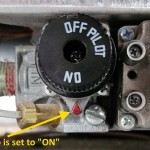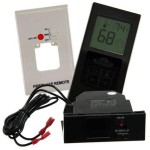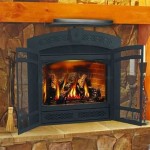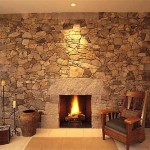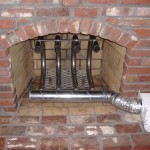Ventless Gas Fireplace Installation Near Me: A Comprehensive Guide
The allure of a warm, inviting fireplace in a home is undeniable. For homeowners seeking a convenient and space-saving solution, ventless gas fireplaces offer an attractive alternative to traditional wood-burning models. The appeal of these fireplaces lies in their ability to operate without the need for a chimney or venting system, simplifying installation and expanding placement options within a dwelling. Finding reputable "Ventless Gas Fireplace Installation Near Me" professionals is crucial for ensuring a safe and efficient installation process.
This article provides a comprehensive exploration of ventless gas fireplace installation, covering essential considerations, safety measures, installation procedures, and factors to keep in mind when selecting a qualified installer in your local area. Understanding these aspects is vital for homeowners contemplating this heating solution and for ensuring a seamless and secure integration of the fireplace into their living space.
Key Considerations Before Installation
Prior to initiating the installation of a ventless gas fireplace, careful consideration of several key factors is paramount. These factors directly impact the fireplace's performance, safety, and compliance with local regulations.
Room Size and Ventilation: Ventless gas fireplaces release combustion byproducts directly into the room. Therefore, adequate room size and ventilation are critical to prevent the buildup of carbon monoxide and other potentially harmful gases. Most manufacturers stipulate minimum room size requirements for their ventless fireplaces, typically based on the fireplace's BTU (British Thermal Unit) output. A general rule of thumb is to ensure sufficient cubic footage within the room to dilute the combustion byproducts. Supplemental ventilation, such as a ceiling fan or open window, may be necessary, especially during prolonged operation. Consulting local building codes is essential to determine specific ventilation requirements for ventless gas appliances.
Gas Line Access and Capacity: Ventless gas fireplaces require a natural gas or propane supply line to operate. The existing gas line must be readily accessible and have sufficient capacity to supply the fireplace's BTU demands. A qualified gas technician should assess the gas line's capacity and ensure it meets the fireplace's specifications. If the existing gas line is inadequate, an upgrade or a new gas line installation may be required, potentially adding to the overall installation cost. Proper gas line sizing and connection are crucial for preventing gas leaks and ensuring the fireplace operates safely and efficiently.
Local Codes and Regulations: Building codes and regulations governing the installation of ventless gas fireplaces vary significantly depending on the municipality. It is imperative to consult with the local building department to determine specific requirements, including permit requirements, fire safety standards, and venting regulations. Some jurisdictions may restrict or prohibit the installation of ventless gas fireplaces altogether due to concerns about indoor air quality. Compliance with local codes is not only legally mandatory but also essential for ensuring the safety and structural integrity of the installation. Failure to adhere to these regulations can result in fines, delays, and potentially hazardous conditions.
Fireplace Placement: Choosing the optimal location for the ventless gas fireplace is crucial for both aesthetics and safety. The fireplace should be positioned away from combustible materials such as curtains, furniture, and paper products. Manufacturers typically specify minimum clearance requirements from combustible surfaces. The area surrounding the fireplace should be clear of obstructions to allow for proper airflow and prevent overheating. Consider the room's layout and traffic patterns when selecting a location to minimize the risk of accidental contact with the fireplace. Furthermore, the fireplace should be easily accessible for maintenance and servicing.
Installation Process: A Step-by-Step Overview
The installation of a ventless gas fireplace involves several critical steps that must be performed meticulously to ensure safety and functionality. Engaging a qualified installer is highly recommended for this process.
Preparation and Site Assessment: The installer typically begins by conducting a thorough site assessment to verify the suitability of the chosen location and to identify any potential issues related to gas line access, electrical connections, and clearance requirements. The installer will also review the manufacturer's instructions and local building codes to ensure compliance. The area surrounding the installation site will be properly protected to prevent damage during the installation process.
Gas Line Connection: A qualified gas technician will connect the fireplace to the existing gas line, ensuring a secure and leak-free connection. This involves using appropriate fittings, pipe sealant, and leak detection methods. The gas line pressure is typically tested to verify it meets the fireplace's specifications. The technician will also install a shut-off valve near the fireplace for safety purposes. It is crucial that the gas line connection is performed by a licensed professional to prevent gas leaks and potential explosions.
Fireplace Mounting and Securing: The fireplace unit is carefully mounted and secured to the wall or floor according to the manufacturer's instructions. This may involve using brackets, screws, or other fasteners to ensure the fireplace is stable and level. The installer will verify that the fireplace is properly aligned and that there are no gaps or spaces between the fireplace and the surrounding wall or floor. Proper mounting is essential for preventing the fireplace from shifting or falling, which could pose a safety hazard.
Electrical Connections (if applicable): Some ventless gas fireplaces require electrical connections for features such as blowers or electronic ignition systems. The installer will connect the fireplace to a dedicated electrical circuit, ensuring it is properly grounded and protected by a circuit breaker. All electrical work must comply with local electrical codes. If the fireplace does not require electrical connections, this step is omitted.
Testing and Calibration: Once the fireplace is installed and connected, the installer will conduct a series of tests to verify its functionality and safety. This includes checking the gas pressure, ignition system, flame pattern, and carbon monoxide levels. The fireplace is calibrated to ensure it is operating efficiently and safely. The installer will also provide the homeowner with instructions on how to operate and maintain the fireplace.
Final Inspection and Cleanup: After the installation is complete, the installer will conduct a final inspection to ensure everything is in order. This includes cleaning up the work area and removing any debris or packaging materials. The installer will also provide the homeowner with a certificate of compliance, if required by local building codes. The homeowner should carefully review the installation and ask any questions before the installer leaves the premises.
Selecting a Qualified Installer: Key Considerations
Choosing a qualified and experienced installer is paramount for ensuring the safe and efficient installation of a ventless gas fireplace. The following factors should be considered when selecting an installer.
Licensing and Insurance: Verify that the installer possesses the necessary licenses and insurance to perform gas appliance installations in your local area. Licensing ensures that the installer has met certain qualifications and has demonstrated competency in gas fitting and installation. Insurance provides liability protection in case of accidents or property damage during the installation process. Request to see copies of the installer's licenses and insurance certificates before hiring them.
Experience and Expertise: Opt for an installer with proven experience and expertise in installing ventless gas fireplaces. Ask for references from previous customers and review online testimonials to gauge the installer's reputation and quality of workmanship. An experienced installer will be familiar with the specific requirements of ventless gas fireplaces and will be able to address any challenges that may arise during the installation process.
Certifications and Training: Look for installers who hold certifications from reputable organizations such as the National Fireplace Institute (NFI) or the Gas Appliance Manufacturers Association (GAMA). These certifications demonstrate that the installer has undergone specialized training and has met industry standards for gas appliance installation. Certifications provide assurance that the installer is knowledgeable and skilled in performing the job safely and effectively.
Detailed Estimates and Contracts: Obtain detailed estimates from multiple installers before making a hiring decision. The estimate should clearly outline the scope of work, materials costs, labor charges, and any additional fees. A written contract should be signed by both parties, specifying the terms and conditions of the installation, including payment schedules, warranty information, and dispute resolution procedures. A detailed estimate and contract protect both the homeowner and the installer and ensure that everyone is on the same page regarding the project's expectations.
Compliance with Safety Standards: Ensure that the installer is committed to adhering to all relevant safety standards and regulations during the installation process. This includes using appropriate tools and equipment, following manufacturer's instructions, and conducting thorough testing to verify the fireplace's safety and functionality. A reputable installer will prioritize safety and will take all necessary precautions to prevent accidents or hazards.
Post-Installation Support: Inquire about the installer's post-installation support services. A reputable installer will offer ongoing support and maintenance services to ensure the fireplace continues to operate safely and efficiently. This may include providing annual inspections, cleaning services, and repair services. Choose an installer who is responsive and readily available to address any questions or concerns that may arise after the installation is complete.
Finding "Ventless Gas Fireplace Installation Near Me" doesn't just mean finding the closest option. It means finding a competent and reliable professional who can ensure the fireplace is installed correctly and safely. Take the time to vet potential installers thoroughly before making a decision.

Nyc Fireplace Hearth Cabinet Ventless

Home I Hearthcabinet Ventless Fireplaces

Home I Hearthcabinet Ventless Fireplaces

Best Fire Space Installations In New York Ny Fireplace Installation Nyc Free Expert Estimate Near Me
:max_bytes(150000):strip_icc()/ventless-gas-fireplaces-4160746-hero-f9d4bdcd9bd446eb84406de306f790ba.jpg?strip=all)
How To Pick Out A Ventless Gas Fireplace

What Is A Ventless Gas Fireplace Experts In Gaithersbutg Md

Ventless Gas Fireplace Propane

Home I Hearthcabinet Ventless Fireplaces

Empire Innsbrook Ventless Gas Fireplace Insert 28 Deals

I Built A Fireplace Easier Than Thought
Related Posts


